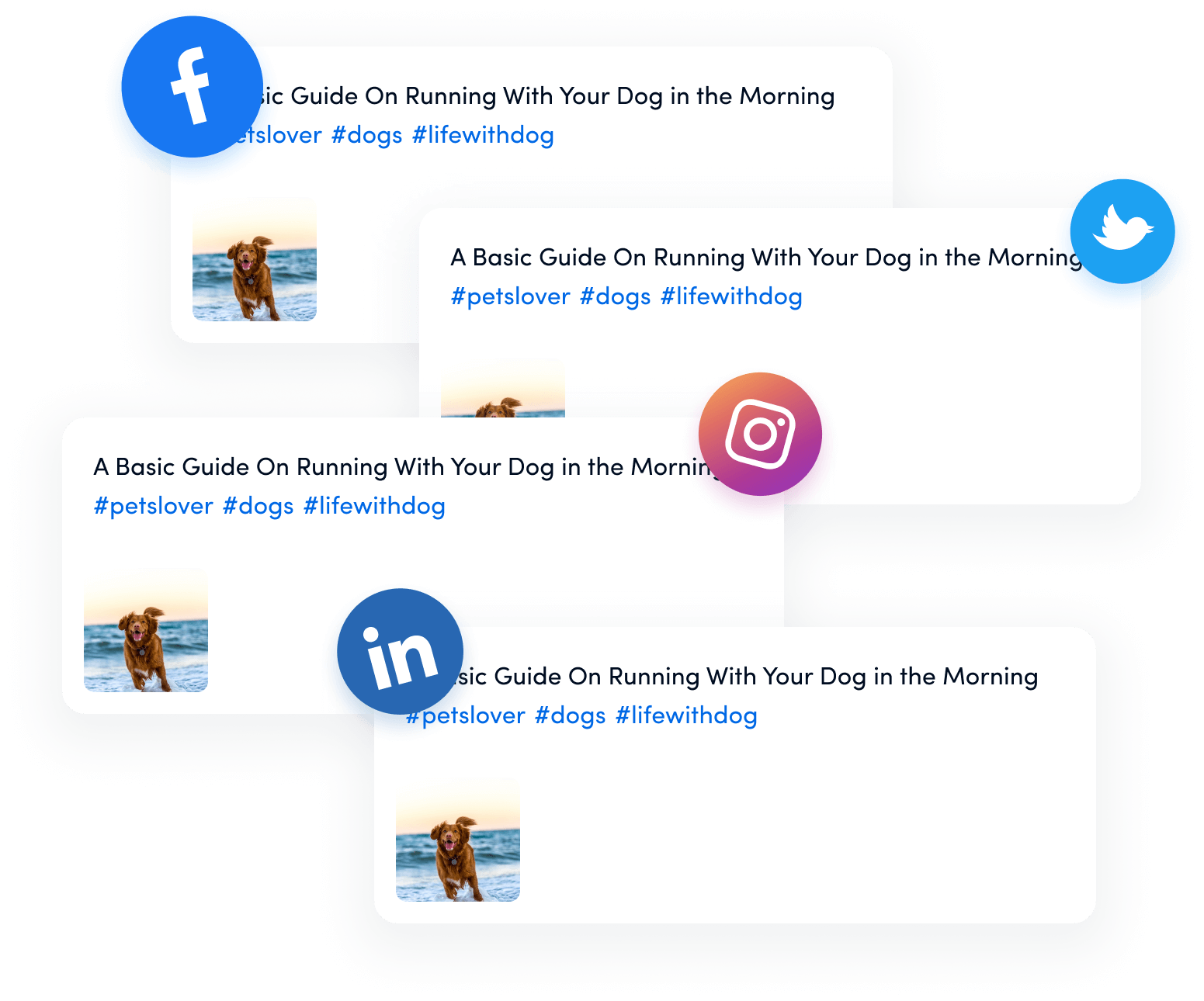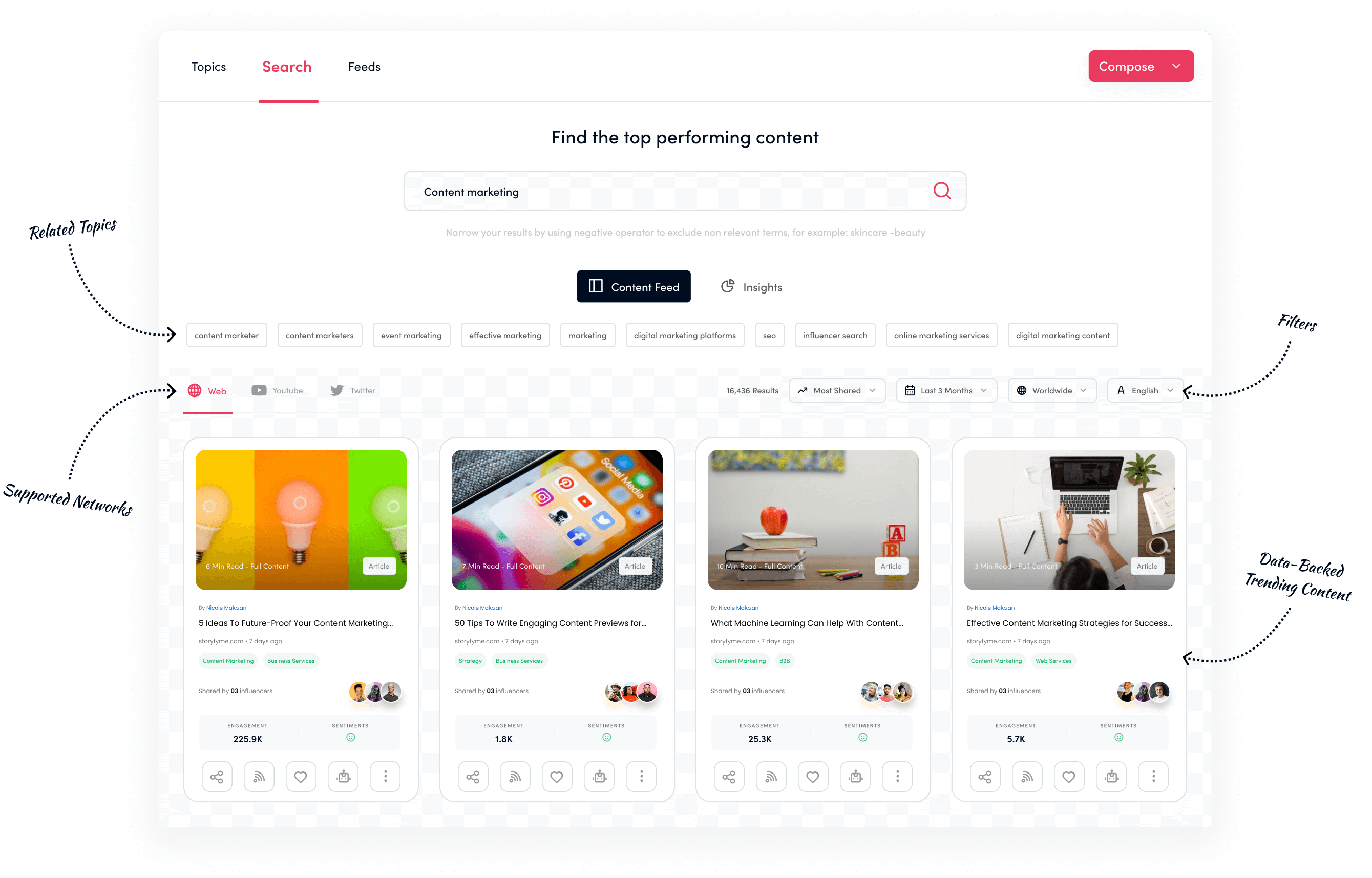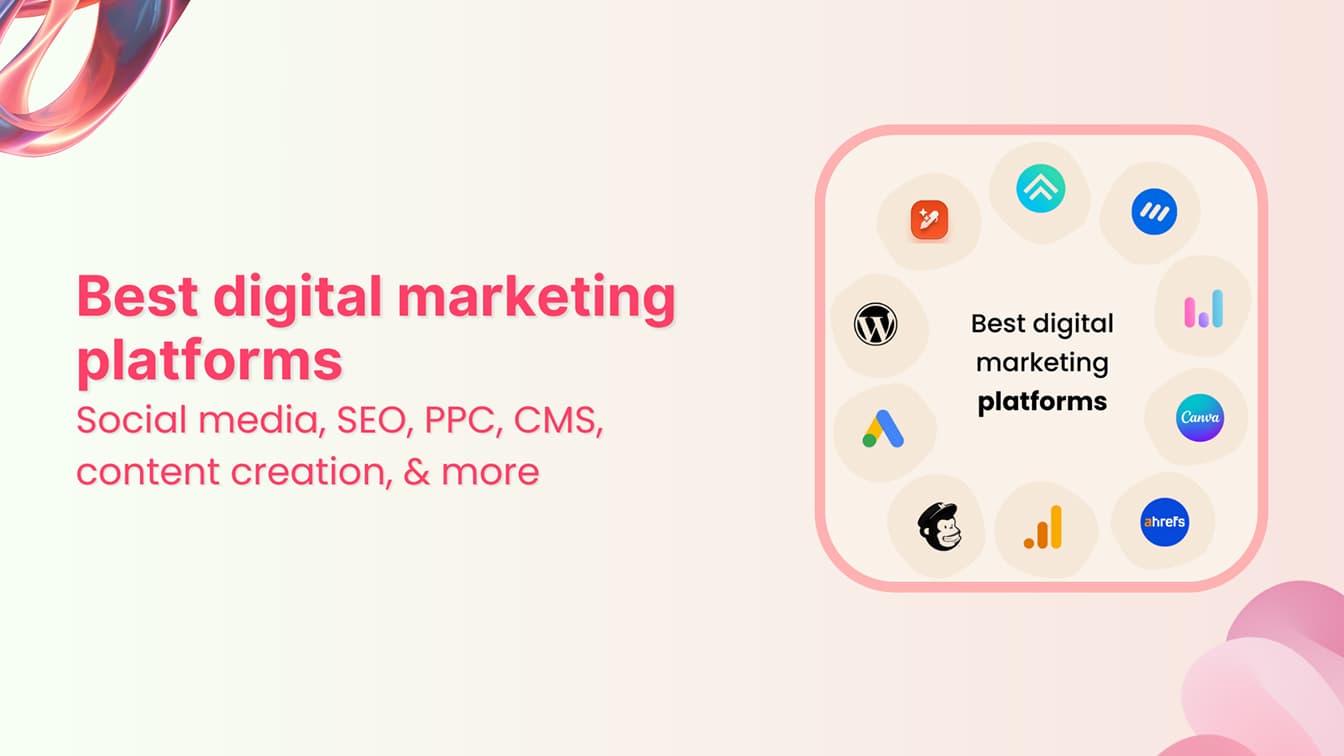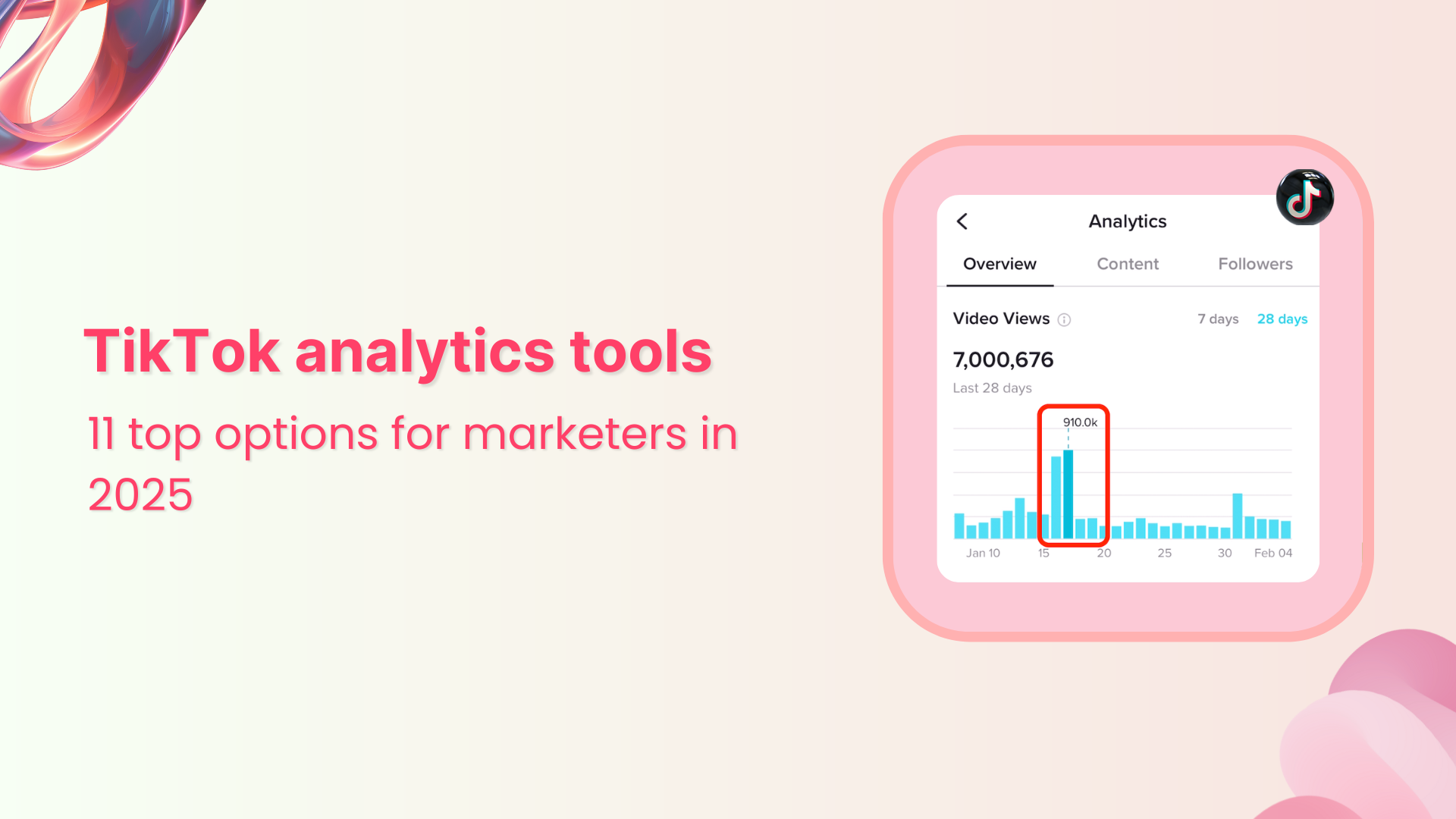🚀 Introducing Contentpen – Your AI-Powered content assistant!Join the waitlist.
A Complete Guide On Growth Marketing – Top Tactics & Examples

Once upon a time, marketers only relied on tried and tested strategies of attracting and retaining customers. Then came 2010, and the word ‘growth marketing’ came to the surface — coined by Sean Ellis, a marketing maestro and entrepreneur.
Sean defined a growth hacker as a marketer focused on trying new strategies, experimenting, and leading the team with the flexibility to meet customers’ changing needs.
Related Read: How to Craft a Winning Social Media Content Strategy for Growth in 2023
But how exactly is growth marketing helpful? Is it time you invest in it? Or is it another overrated approach to marketing?
Simplified social media marketing for individuals & agencies.

In this piece, let’s answer all this for you as we double down on what growth marketing is. We’ll talk about its components, as well as its benefits, strategies, and examples. Along the way, we’ll also take a look at how growth marketing differs from traditional marketing.
Let’s get started.
First of All — What is Growth Marketing?
As its name suggests, growth marketing uses marketing tactics aimed at quickly scaling a business. To this end, it revolves around testing and applying innovative marketing strategies for rapid growth.
This type of marketing uses content, email, SEO, and social media marketing techniques based on customer behavior and preferences learned by tracking analytics.
Social Media Analytics Fine-tune your social media strategy for success with in-depth analytics and white-labeled reports.
In simpler words, growth marketing has mainly two things at its heart:
- Vigorous testing of different marketing methods to see what’s working
- Tracking insights to review customer’s responses to said marketing efforts
In the end, growth hackers create a long-term strategy to help achieve more than what typical marketing does.
Remember, unlike traditional marketing, growth hacking doesn’t focus on acquiring and retaining customers only. Instead, it goes beyond customer retention to continually attract new customers and create a loyal user base by means of experimentation.
The aim? To drive scalable and sustainable results and create an edge over competitors.
Take it from Databox. The SaaS business uses several growth hacking techniques. One such smart growth hacking move is creating an affiliate program allowing them to market their software’s free version through their users. In exchange, Databox offers a 20% recurring commission to affiliates whose referrals upgrade to Databox’s paid plan.

This way, the analytics tool kills two birds with one stone:
- It encourages brand awareness, constantly building its user base
- And it offers a healthy commission to loyal users who market their product for them
Put another way, Databox uses an affiliate program to speed up marketing — attracting new paying users while retaining older ones at the same time.
Core Components of Growth Marketing
An effective growth marketing strategy, as found in books on marketing strategies, has certain core components, without which it is just regular marketing.
Meaning: you cannot dive into growth marketing to speed up your business’s progress without first understanding these components.
Wondering what features make growth hacking what it is? Let’s walk you through 5 of the main components of this relatively new marketing practice:
1. Experimentation
All innovation thrives on testing to determine whether it can be a success. This is why growth marketing sits on a strong foundation of experimentation.
This means growth hackers are willing to take risks and find different creative ways to entice their target audience. They test different marketing methods to determine which delivers the best results.
The question now is: what’s the best way to experiment? A/B test. It’s best to compare two or more variables to see which is most effective.
When A/B testing yourself, be sure to create at least two marketing variables. Then, send both of them out to sample groups of customers to see which gets the better response.
For instance, create two ad copies for a Facebook campaign. Next, share them to learn which resonates more with your target audience. Once the results come in, study why one did better than the other so you can implement the most effective copy to your marketing strategy.
2. Product development
Another aspect of growth marketing is the willingness to make changes to existing products to meet customer needs.
A growth marketer wouldn’t hesitate to offer their products’ users better features. For this, they may resort to social listening or surveys to source feedback about making the necessary alterations to the tool.
Note that this component of growth marketing is more applicable to SaaS businesses as they can conveniently improve their product as per customers’ demands.
3. Analytics
Growth marketing requires you to always keep your eyes peeled for changes in customer behavior.
What is the better way to access your target audience’s reactions? Tracking analytics.
By zooming into the KPIs of each campaign, a growth marketer can measure the popularity or effectiveness of his campaigns and products.
In simpler words, growth hacking relies heavily on data to learn about and implement strategies that are effective at achieving long-term business goals.
Social Media Analytics Fine-tune your social media strategy for success with in-depth analytics and white-labeled reports.
4. Teamwork
One thing most forget to consider: growth marketing isn’t a lone person’s job.
Instead, all teams must be on-board with the idea of rapid growth to benefit the business on the whole. Meaning: the sales, product, marketing, and customer support teams need to work together toward a common goal.
Also Read: How to Build an Accomplished Social Media Team for Your Agency
For example, only when the customer support team relays timely feedback the product team will be able to make changes to the product. Consequently, only then will the design and content team create new visuals to reach the target audience.
5. Organic growth
While growth hackers also adopt paid strategies such as social media ads, they lean more toward organic growth.
Read Up: 7 Instagram Growth Hacks To Learn From Social Media Experts [2023]
For this reason, they typically leverage referral programs and virality tactics since both of these trigger word-of-mouth marketing.
The end goal is simple: to achieve sustainable growth without breaking the budget.
6. Customer feedback
To reiterate, growth marketing is about meeting your customers where they are in their journey.
Meaning: as a growth hacker, you must aim to make things as smooth as possible for your customers regardless of which part of the funnel they are at.
What is the best way to ensure your processes are seamless for your audience? No better way than using heat mapping tools to watch them interact with your website and tool or asking them directly.
In other words, customer queries, recommendations, and experiences are central to growth marketing.
Related Read: How to Positively Handle Negative Comments on Social Media?
Top 5 Benefits of Growth Marketing
So far it’s clear that growth marketing sits on the pillars of cross-team collaboration — requiring the entire team to have their hands on the desk, ready to make changes, analyze, learn, and refine strategies.
But is all this hassle worth it? The short answer: yes. Because growth hacking delivers these top 5 benefits that make it worth the effort:
1. Increases brand awareness
Growth hackers have a simple mantra: try strategies that encourage fast upscaling.
To this end, they may use marketing techniques such as creating viral content. By creating buzz around the business, growth marketing captures more people’s attention, ensuring increased brand awareness.
Also Read: How to Go Viral on Instagram in 2023
A growth hacker may also use other strategies like influencer, referral, or affiliate marketing to encourage more people who are already their customers to spread the word further about their brand.
So, this type of marketing helps consistently grow the business by reaching more people.
2. Encourages creative thinking
Another benefit of growth marketing is that it encourages the entire team to think outside the box.
How? Because growth marketing is all about adopting unique and new ways to reach a wider audience, marketers are pushed to think of better ways to promote their products.
With everyone’s creative gears rolling and the team trying the latest trends, the business is able to be a cut above the rest.
Also Read: Short Bio Examples That Will Impress Your Audience
This way, growth hacking is great for the growth of the team as well as of the business.
3. Higher return on investment
Growth marketing has a higher ROI while also being cost-effective.
A growth hacker uses existing resources and marketing channels to test different ideas.
By making the most of social media, search engine optimization, and content marketing, growth hackers don’t take the costs up but bring in more sales and revenue.
Related Read: Everything You Need To Know About Youtube SEO
But that’s not all because growth marketers also save on costs by segmenting their audiences. They send out offers and content to particular audiences that are likely to be more receptive to their marketing efforts. In turn, they prevent wasteful expenditure on irrelevant audiences, making the most of the dedicated marketing budget.
4. Ensures customer loyalty
Unlike most traditional marketing methods, growth marketing does not ignore its customers after converting them.
Instead, a growth hacker focuses on engaging existing customers, which also helps create brand loyalty.
To this end, growth marketing zeroes in on listening actively to customer feedback, providing value through content, offering exceptional customer support, and having loyalty rewards and programs in place.
5. Promises efficiency
Many believe that a growth marketing strategy is solely for startups.
However, even if your business has been in the market for years, it can exponentially benefit from growth hacking.
The best part is that the increase in sales, conversions, and revenue is quick with this type of marketing. Since growth marketing taps into what works best for your business and is data-driven, it ensures quick results in a short time.
What are the Best Growth Marketing Strategies?
The best growth marketing strategy for your business is one that aligns with your budget, target audience, and niche.
That said, here are some strategies that top marketers are using to speedily scale their businesses:
Content marketing
Various content formats, from how-to blog posts and listicles to infographics and videos, can help you build a library of entertaining or educational content for your target users.
Creating valuable and shareable content is a great way to engage your customers. Not to mention content marketing also helps position you as an authority in your industry, along with informing your target audience about your product.
You can create targeted content for different stages of your marketing funnel to help buyers or readers where they are at in their journey with you.
Social media marketing
Apart from surfing on the internet, most of your audience likely spends time on social media, which is another great (and free!) place to meet them.
This is why your brand shouldn’t just be active but share purposeful content on social media.
Running targeted ads on social networks, jumping on viral trends, planning giveaways and encouraging user-generated content are some great ways you can use social media growth marketing to your benefit.
Content Discovery Find the top-performing content on the web and never run out of social media post ideas.
Search engine optimization (SEO)
Yet another strategy growth hackers rely on to gather organic traffic: search engine optimization.
SEO is crucial everywhere on the web, from your product descriptions and web copy to your social media accounts. A well-planned SEO strategy can do wonders in attracting more leads to your business.
By sprinkling keywords cleverly across web content and following SEO rules, growth marketers can benefit from ranking high on the SERPS.
Read Up: How Social Media and SEO Boost Website Traffic Together?
Referral marketing
Want customers to market your product for you? Try referral marketing.
This type of marketing is great for retaining loyal customers, too, as it typically offers them something, such as a discount code, to incentivize them to recommend your product.
With the lure of getting an incentive in return, your target audience is likely to participate in this strategy which helps attract more folks to your brand. Moreover, integrating a QR code generator can simplify the referral process, enabling loyal customers to quickly share unique referral links across various platforms and potentially expanding their reach and conversion opportunities.
Influencer marketing
Influencer marketing is only getting more and more popular. In fact, 93% of marketers have already resorted to using it.
As part of your growth marketing strategy, you can collaborate with influencers in your niche to introduce your brand to their target audience.
To benefit more, many growth strategies also involve sharing a unique discount code with the influencer’s audience so they’re more willing to check out their business.
Email marketing
Growth hacking can also employ email marketing for customer acquisition and retention.
This includes building an email list by means of a lead magnet and then engaging subscribers through personalization to foster loyalty.
Optimized email campaigns can help onboard new users as well as win back inactive customers. If anything, email marketing offers several opportunities to deliver value to customers and support the business’s growth goals.
How Growth Marketing Differs from Traditional Marketing
You might be thinking: these days, regular marketing also uses social media and often involves a website. Then how does growth marketing differ from it?
The answer is simple: in mainstream marketing, a business may have an online presence but not a data-based strategy behind it.
Growth marketing, on the other hand, functions on the grounds of experimentation, analysis, and proactive changes.
In fact, there are quite a few ways in which growth marketing differs from traditional marketing. Take a look:
- Growth marketing is cost-effective. It pursues business growth with a restricted budget by using freely available channels and resources to cut costs.
- It is data-driven. Rather than relying on long-term planning and time-tested methods as regular marketing does, growth hacking involves quick decision-making based on analytics and testing.
- Finally, growth marketing is customer-centric, targeting customers throughout the marketing funnel. On the flip side, traditional marketing only focuses on acquiring customers, which is just one stage of the buyer’s journey.
Ultimately, which approach your business should pick depends on your industry and business goals.
5 Growth Marketing Examples to Learn From
And finally, to fuel your inspiration tank, here are 5 examples of businesses using growth marketing that you can pick ideas from:
1. ContentStudio
ContentStudio, a social media automation software, has a freemium program in place to attract more customers. According to its pricing plan, new users can try out the tool for free for 14 days.

How does this help? A free trial encourages people to join in. Many new users who sign up for a free plan will likely upgrade to a paid one.
This isn’t all – the B2B tool also walks its users through how it works in-depth by sharing how-to guides such as this one:

Such content helps with onboarding new users while retaining older ones.
2. Meshki
Fashion brand Meshki makes the most of influencer marketing to reach more people rapidly. It works with influencers on all major social media networks, including Instagram and TikTok.
Take a look at its Instagram collaboration with plus-size model and influencer Denise Mercedes:

Apart from partnering up with influencers, Meshki also uses social media to inform customers of sales and run ads.
@meshki End of Season Sale has DROPPED (literally). Shop up to 60% off selected styles online now. 💸 #MESHKI #endofseason #endofseasonsale #sale #summer #summervibes #summer2023 #eurosummer #shoppinghaul #clothing #winterfashion
3. Visme
Visme is a visual content creation tool that uses a robust content strategy to help customers learn more about design.
Here are two ways Visme’s content plan works as part of its growth marketing strategy:
- All its content incorporates SEO that pulls this design tool up to the top of SERPs
- In addition to countless educational blog posts, the software’s website helps users learn how to use it through videos, tutorials, courses, and webinars. This makes customer acquisition smoother.

A cherry on top: Visme offers several free templates to users, making designing much easier for them. This way, it encourages even non-designers to use the software.
4. Sephora
Sephora encourages its customers to spend more with its Beauty Insider rewards program.
This free loyalty program gives customers points for every dollar they spend at Sephora. Buyers can redeem their collected points for rewards in the Rewards Bazaar.
To make this rewards program more interesting, Sephora lets users earn more points and benefits when they spend more.

Wondering how this growth strategy helps? Beauty enthusiasts are more willing to shop at Sephora than other makeup avenues since they earn points for the money they spend.
Meaning: the Beauty Insider program ensures customer loyalty and gives Sephora an edge over its competitors. It also encourages more people to shop at Sephora, online and in-person as the program is free to join.
Pro tip: follow Sephora’s footsteps and use a popup, the footer and the header areas to talk about your exclusive loyalty program. This way, it catches the attention of visitors instantly.

5. Grammarly
You may (or may not) have come across Grammarly’s ads on YouTube. But the video-based social channel isn’t the only place where Grammarly works its growth marketing magic.
In fact, email marketing is another area the writing software focuses on.
Once you sign up and subscribe to its newsletter, Grammarly gives you all the latest updates about how to use it and shares any running offers on its premium plan.

This isn’t all – the writing assistant also makes a case for why you should upgrade by giving you stats on how you’ve been using the free version oh-so-well.

With personalized emails such as these, Grammarly ensures users don’t leave it behind — a solid strategy for customer retention.
Scale Your Business with Growth Marketing
In today’s day and age, growth marketing is what most businesses need to scale fast.
This type of marketing is data-driven, cost-effective, and focuses on experimentation for rapidly scaling a business.
With strategies such as content marketing, search engine optimization, and social media marketing, growth hackers are able to make a business stand out of the crowd.
FAQs
-
What is growth marketing vs digital marketing?
Many of the strategies used in digital marketing are also used in growth marketing. However, growth marketing is data-driven and takes a more flexible approach, unlike digital marketing.
Where digital marketing is about implementing social media and SEO strategies, growth marketing applies these strategies after testing different forms and tracking analytics to learn what is working best for the business.
-
What is the future of growth marketing?
The future of growth marketing seems to be quite bright as it takes a customer-first approach. Growth marketing revolves around the idea of meeting customers where they are in the funnel by adopting the latest trends and technologies. Therefore, it provides an engaging customer experience which is the future of marketing itself.
-
What is B2B growth marketing?
B2B growth marketing refers to following a data-driven approach to attract, acquire, and retain a business’s customers/ clients. Such marketing tracks analytics to determine which strategies are working and which aren’t to create a long-term plan for meeting business goals.
Subscribe to our weekly newsletter!
Join over 14,500+ agencies and brands to stay informed with weekly social media updates, blogs, strategies, and expert tips right into your inbox!





